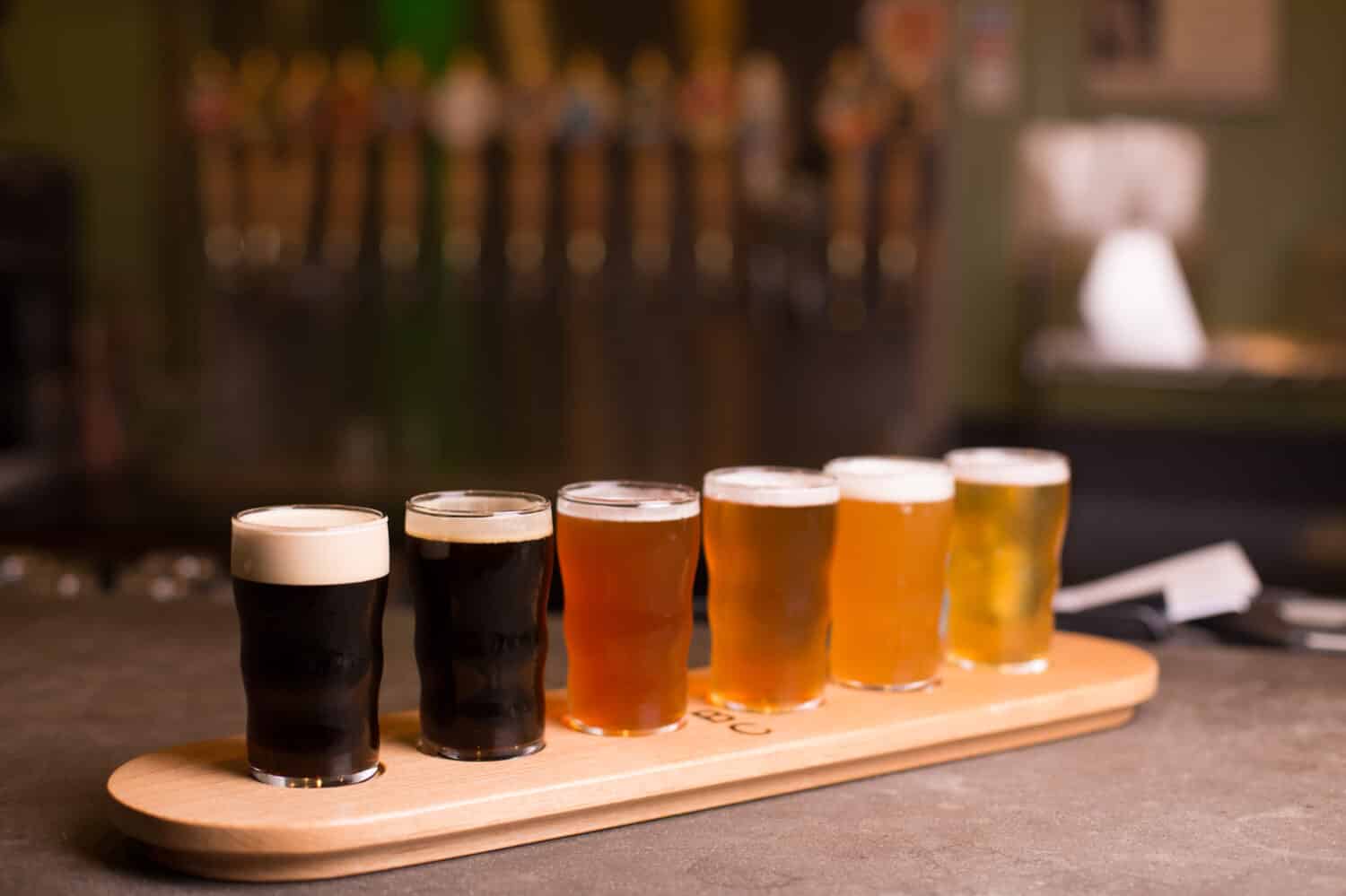Have you ever wondered about the differences between malt liquor vs. beer? The short answer is that malt liquor is a type of beer but with a much higher alcohol content. They’re both made with malt, but after the brewing process, additional rice, corn, and sugar components are added to the malt liquor concoction. This increases the alcohol content considerably. The differences between the two come down to the brewing process, the alcohol content, the taste, and the price. While they may be sold next to one another at the store, and both provide that malty-hoppy taste, the differences are enough to make them unique in their own right.
In this post, you’ll learn more about the history of these types of alcohol. We’ll discuss the process in which they are brewed, and you’ll get a better idea of their major differences. Get some ideas of popular brands that sell malt liquor and beer, and learn some cool facts along the way. By the end of this, you’ll be a pro at telling the two apart, and maybe you’ll even want to try an at-home brew. Happy reading!
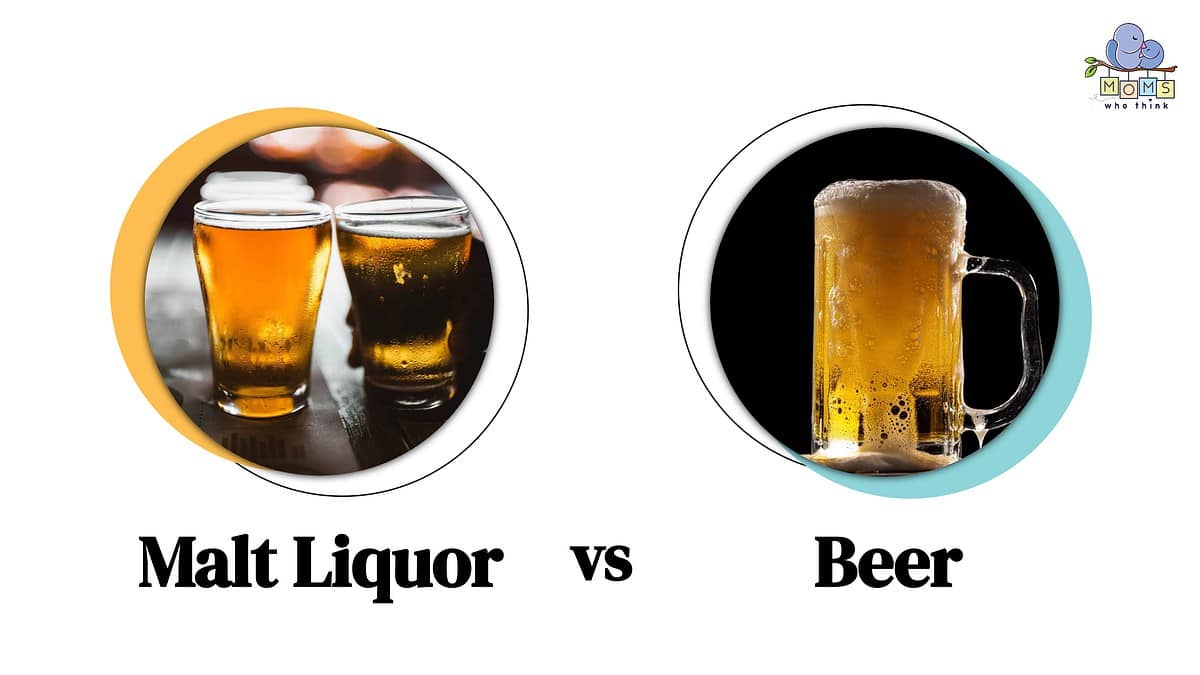
Malt Liquor vs. Beer: What Is The Difference?
There are 4 distinct differences between malt liquor and beer. The two have a slightly different brewing process, which results in a different alcohol content, and taste. The production process also impacts the overall price point of malt liquor vs. beer. While malt liquor is a type of beer, beer is not the same as malt liquor. Let's get more into the details that set these two apart.
What Is Malt Liquor?
Malt liquor is defined as a type of beer with a high alcohol content. Like beer, malt liquor is made through fermentation, but in the final steps of the brewing process, more ingredients are added to up the sugar content, and thus the alcohol content. Malt liquor tends to be more sugary in flavor than beer, and the added sugar creates more carbon dioxide which increases the fizziness factor (via Allrecipes).
History And Origin Of Malt Liquor
The process of brewing beer has evolved significantly over the years. At some point, it made the sugary shift toward a cheap-to-make and filled-with-alcohol malt liquor. While malt liquor was mentioned in a document dating back to 1690 England, it wouldn't gain widespread popularity in America until the repeal of prohibition in 1933. The Great Depression impacted the production of beer because there wasn't enough malt for the brewing process, but luckily, with the addition of sugar, enter malt liquor. As production increased, the price point made malt liquor all the more popular. To this day, it has continued as a staple of the cheap alcohol market. You'll find it in 40oz bottles, sold in bodegas, liquor stores, and supermarkets all over the country (via Thrillist).
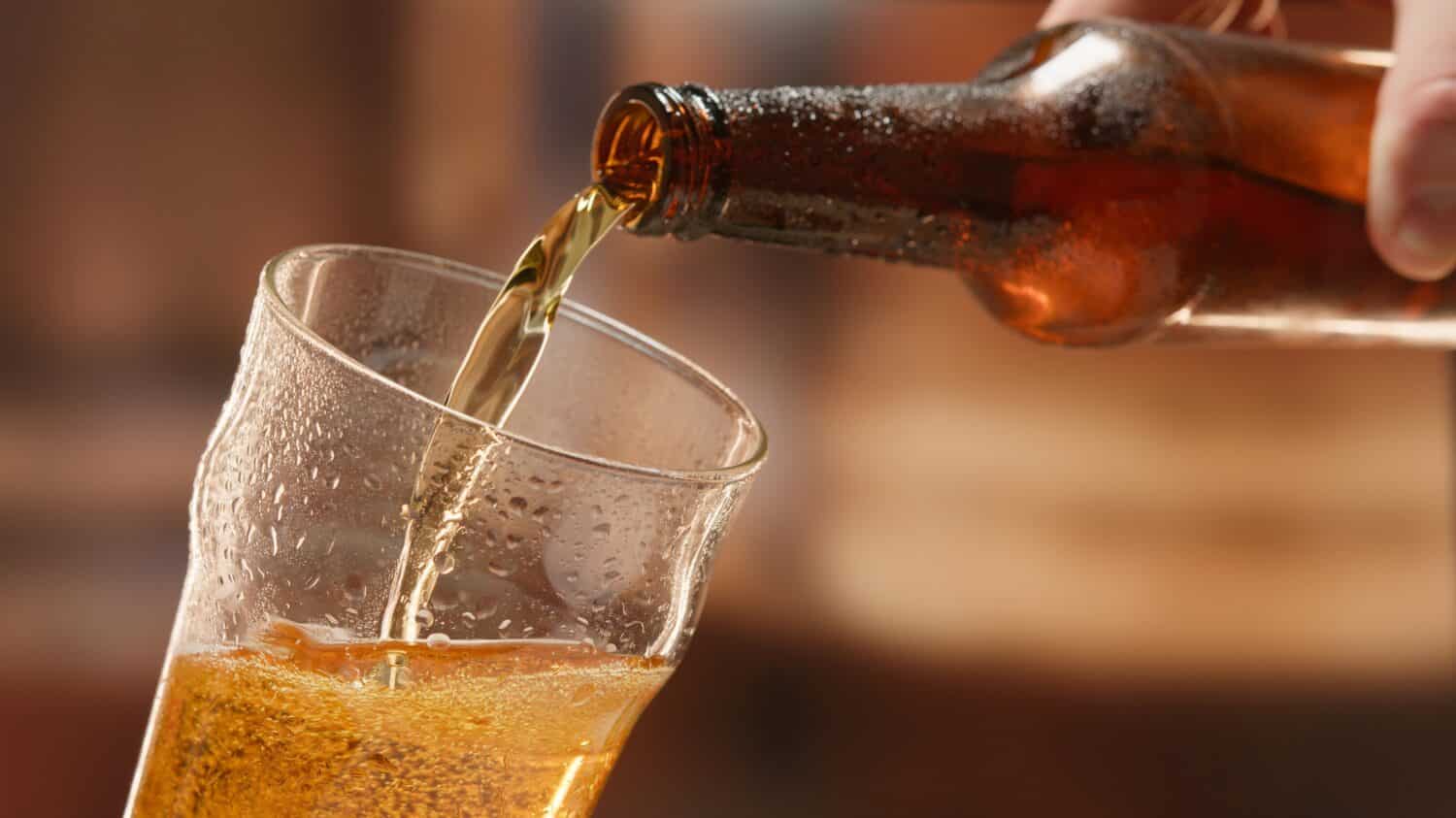
©Kovtun Dmitriy/Shutterstock.com
How Malt Liquor Is Made
For malt liquor production you'll need several pounds of different kinds of malt (processed cereal grains). Get your hands on flaked corn, Irish moss, corn sugar, Lager yeast, and American cluster and nugget hops. This recipe will yield 5 U.S. gallons with an ABV content of 7%. The grain and malt are mashed and water of 130°F is added, the next steps involve heating and adding more liters of water.
The water gets drained, hops are added, and the mixture is then brought to a boil. Irish moss is added, and the whole thing is boiled again. The whole mixture goes through a few more rounds of draining before it's chilled and poured into a sanitized fermenter. The yeast is added and fermented for 4-6 days at 55°F. It goes through another fermenter at 50°F for another 2 weeks, and then to 40°F for another 2-4 weeks. More sugar is added, and the malt is left to set at 60°F. The liquid should turn clear and further carbonate. Store your malt liquor in a refrigerator.
Check out the full recipe through the Home Brewer's Association.
Popular Brands
The most popular brands of malt liquor include Old English 800, Colt 45, St. Ides, and Mickey's Fine Malt Liquor. They're referred to as “forties” because they're sold in 40oz fluid bottles instead of the standard 120z for beer. Other malt liquor-based beverages you may be familiar with include Mike's Hard Lemonade and Smirnoff Ice. There are lots of beverages that use malt liquor as a base, check it out.
What Is Beer?
Beer is another fermented alcoholic beverage that is made with malt, hops, water, and yeast. It is made through the process of the three m's (malting, milling, and mashing) before the concoction is separated, boiled with hops, cooled, aerated, fermented, aged, and then packaged for sale. The fermentation process converts the grain starch (from the malt) to sugar. When combined with the yeast, the sugar creates alcohol and carbon dioxide. Beer has less sugar in it than malt liquor, therefore a lower ABV. There are numerous variations of beer, and a lot of these have different grain bases including rice, agave, sorghum, corn, and millet. Pale ales are made with pale malts, and roasted grains (caramel malts) are used for medium, ambery ales. And finally, stout beer involves the addition of lactose sugar for sweetening (via Brittanica).
History and Origin Of Beer
Brewing beer has been around for thousands and thousands of years. The first traces of converted fermented grain to ethanol alcohol date back to as far as 2400 BCE. Egyptian tombs showcase the process of crushing and drying barley grain. When mixed with water, these dehydrated grain cakes released some of the essentials in beer production. Brewing techniques developed throughout Europe and the Middle East, and beer was popular throughout Celtic, Nordic, and Germanic tribes.
In the Middle Ages, craft breweries became more established, and Germany introduced Hops to other areas like Holland around the 15th century. The methods for production depended very much on the region in which the beer was being made. For instance, in Germany, they used ice to keep the fermenting brews cold during the heat. It got the nickname “lager” which comes from the German word “lagern,” meaning to store. The Industrial Revolution furthered beer production techniques, and when pasteurization was invented in the 1860s, boiling and straining became standard practice. The invention of the refrigerator helped a whole lot with brewing at any time of the year, regardless of temperature. Modern-day breweries, use the finest of equipment to mass produce all kinds of beer, all over the world.
How Beer Is Made
To make beer on your own you'll need the right tools. For this recipe from the Northern Brewer, you'll need a brewing kettle, sanitizer, air-locked fermenter, auto-siphon, spoon for stirring, and beer recipe kit. Fill your brew kettle, and steep your grains in the water until the temperature hits 170°F degrees. Add the malt extracts once the water reaches a full-on boil. The resulting mixture is called wort (sugar water), which you'll need to cool as quickly as you can. The next step is to pour your cooled wort into the fermenter, add more water, aerate, add yeast, and seal the fermenter with an airlock.
The temperature should stay around 68°F for the beer to properly ferment. Store in a cool, dry place. Ales should stay at 68 degrees to ferment properly. This process usually takes around 2 weeks, before you can bottle your homemade beer. Boil priming sugar and pour it into the bottling bucket, along with your fermented beer. Straining the fermented beer will reduce the transfer of sediment. Attach a hose to your bottling bucket and fill up your bottles with your very own beer. Once they're bottled, store them for two weeks so the beer can properly carbonate. Check out the details of this recipe here.
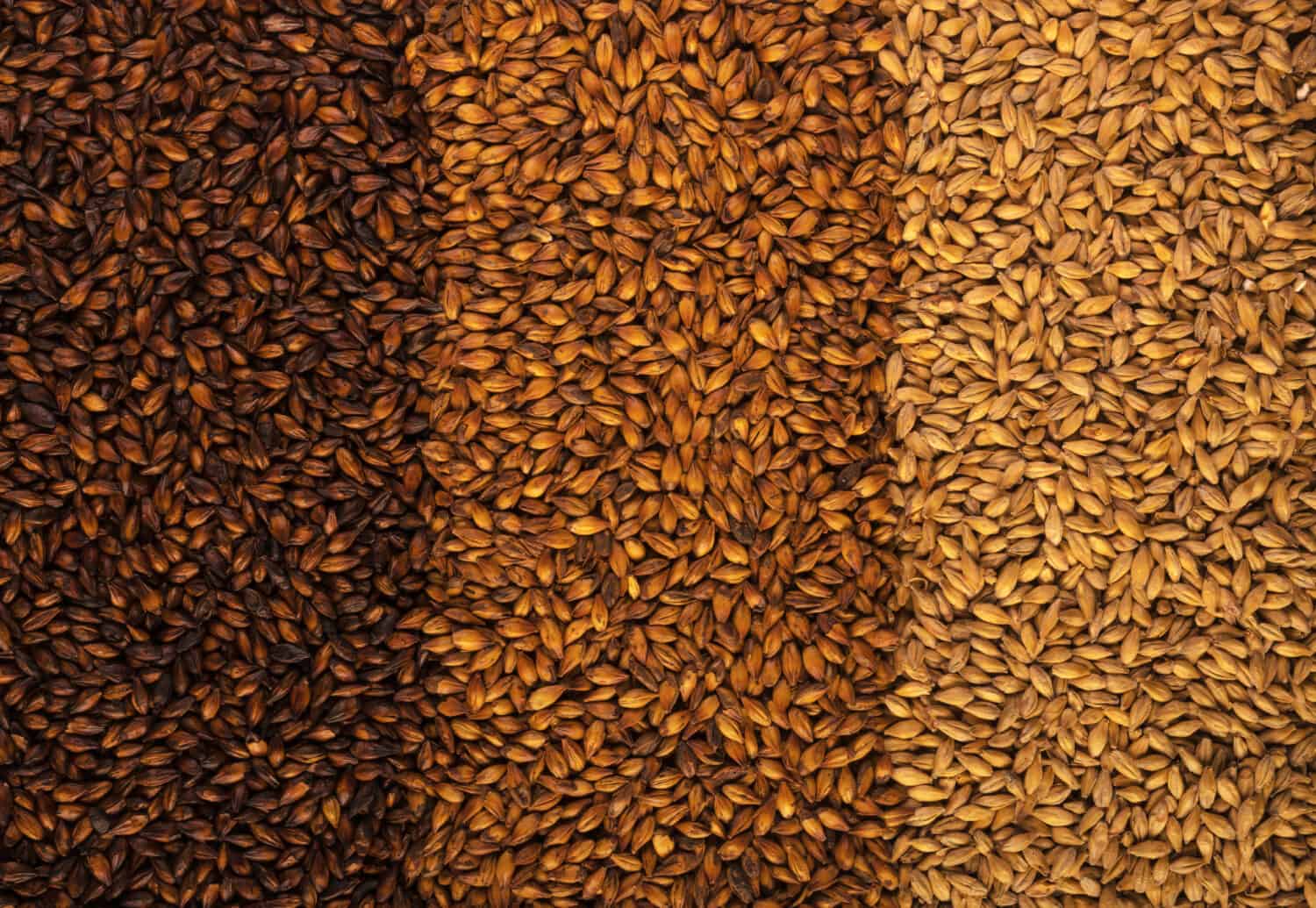
©bioraven/Shutterstock.com
Popular Brands
The most popular kinds of the many types of beer include Guinness, Bud Lite, Corona, Heineken, Yuengling Lager, Modelo, and Pabst. And those are just the top ones in America!
Nutritional Value Comparison of Malt Liquor vs. Beer
Check out this handy nutritional chart below to get a good comparison of malt liquor vs. beer. As you can see, malt liquor has slightly fewer calories than beer, but a much higher protein count. These differences have everything to do with the brewing process and ingredinets of each kind of malted alcohol.
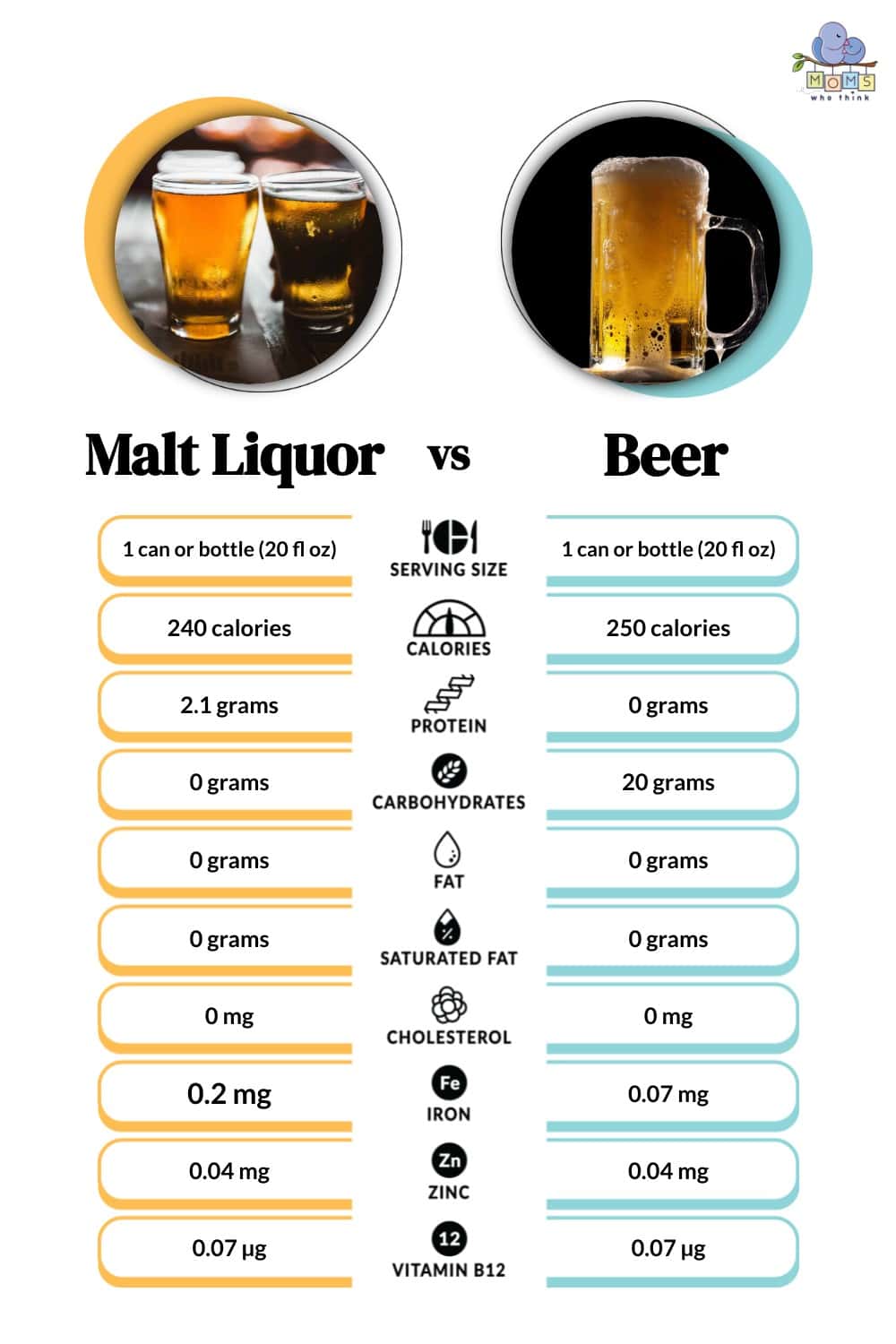
The image featured at the top of this post is ©VDB Photos/Shutterstock.com.
